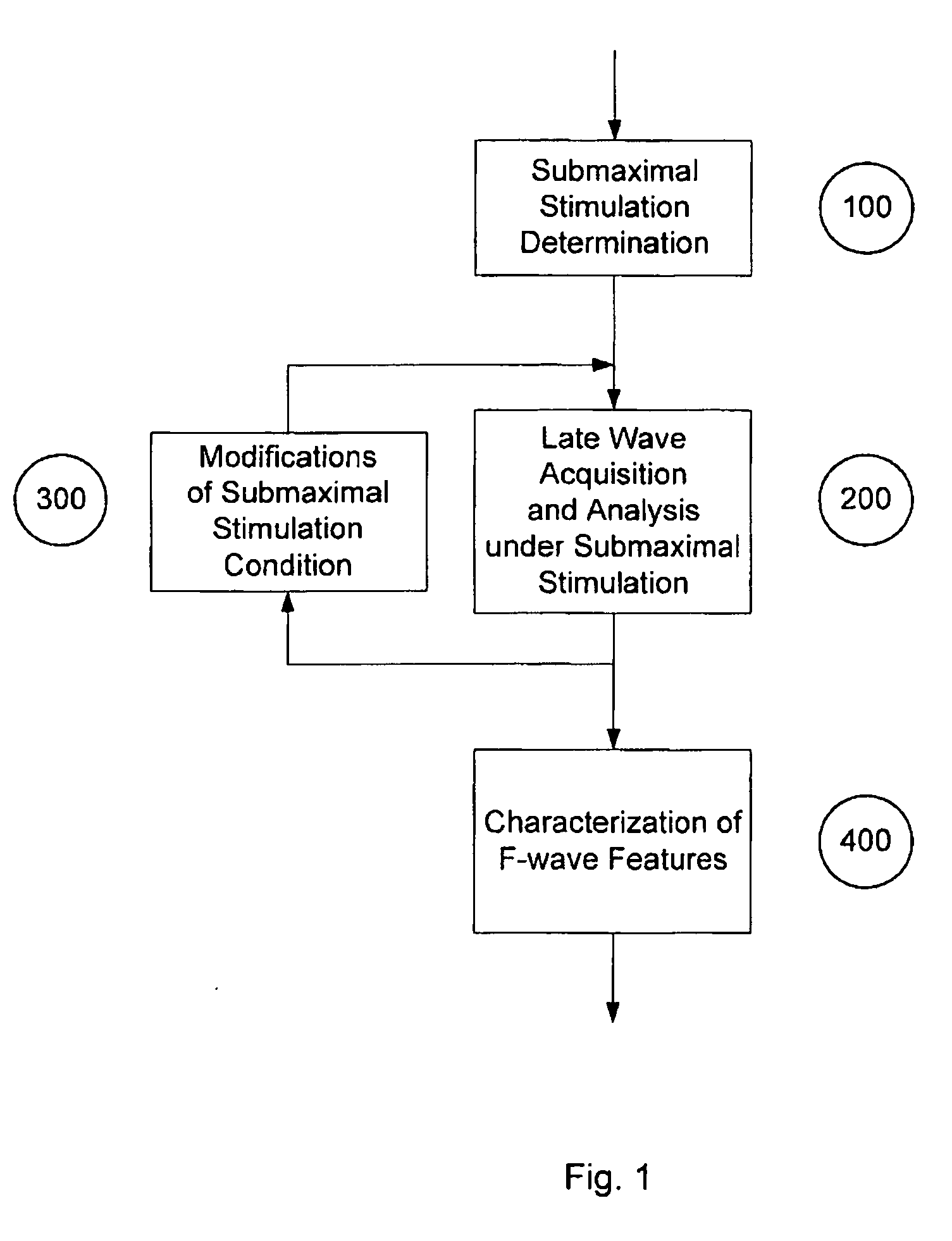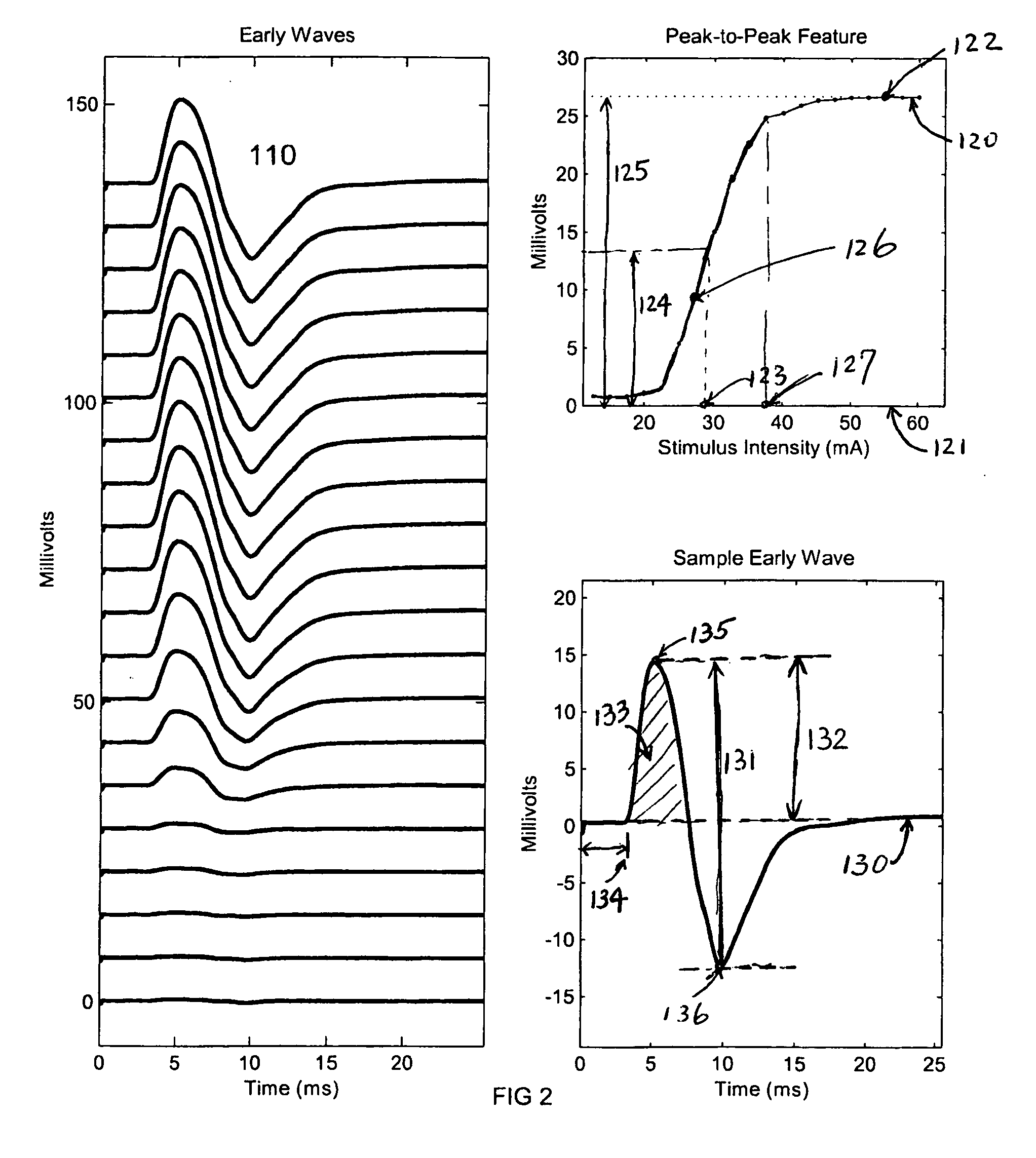Method for automated analysis of submaximal F-waves
a submaximal f-wave and automatic analysis technology, applied in the field of automated analysis of submaximal f-waves, can solve the problems of limiting the utility of repetitive supramaximal stimulation procedures, accumulating even more individual f-wave latencies, and limiting the willingness of patients to accept high stimulus counts, so as to facilitate the collection of a large number of f-waves, enhance clinical utility of existing f-wave features, and reliable estimation of f-
- Summary
- Abstract
- Description
- Claims
- Application Information
AI Technical Summary
Benefits of technology
Problems solved by technology
Method used
Image
Examples
Embodiment Construction
[0106] Electrical stimulation of many peripheral nerves (e.g., median, ulnar, peroneal, tibial, etc.) evokes both an “early response” and a “late response”. The early response is characterized by orthodromic conduction of the impulse, neuro-muscular junction properties, the recording electrode size, the recording electrode location, etc. The late response is characterized by antidromic (i.e., retrograde) conduction of the evoked impulse from the point of stimulation to the spinal cord, reflection of the impulse in a subset of the motor neurons, and orthodromic conduction of the impulse to a location on that nerve or to the muscle or muscles innervated by the nerve, among other things.
[0107] The late response may have several components associated therewith. The F-wave is the component of the late response which is most commonly associated with a muscle recording. The F-wave represents motor neuron backfiring. Its characteristics are affected by the conduction properties of the peri...
PUM
 Login to View More
Login to View More Abstract
Description
Claims
Application Information
 Login to View More
Login to View More - R&D
- Intellectual Property
- Life Sciences
- Materials
- Tech Scout
- Unparalleled Data Quality
- Higher Quality Content
- 60% Fewer Hallucinations
Browse by: Latest US Patents, China's latest patents, Technical Efficacy Thesaurus, Application Domain, Technology Topic, Popular Technical Reports.
© 2025 PatSnap. All rights reserved.Legal|Privacy policy|Modern Slavery Act Transparency Statement|Sitemap|About US| Contact US: help@patsnap.com



